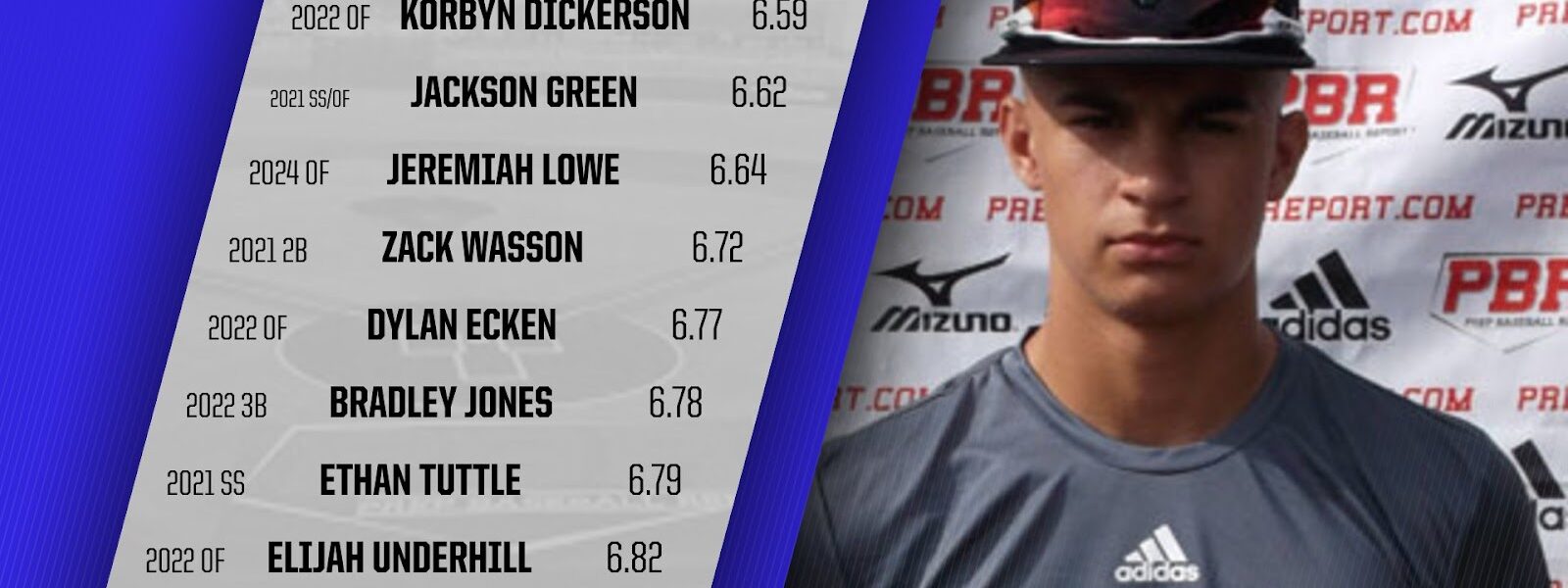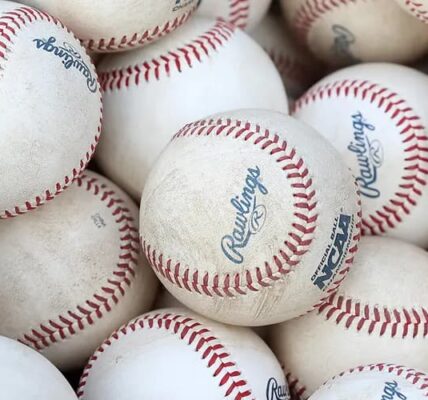In the dynamic world of baseball, speed is not just a desirable trait—it’s a game-changer. Every sprint, every dash, and every calculated move on the field can influence the outcome of a game. One particular speed test stands out as the gold standard in evaluating a player’s prowess—the 60-yard dash. This article delves into the reasons behind its prominence, its historical roots, the benefits it offers to players and teams, effective training strategies, and the ongoing debate surrounding its future in baseball.
The Crucial Role of Speed in Baseball
Speed isn’t just a luxury; it’s a necessity in baseball. From chasing down fly balls to racing to first base, players are in constant motion. A team with speed gains a substantial advantage, especially in the outfield where a slow player struggles to reach balls in the gaps. In a game where perfection is rare, speed provides outfielders with room for error, compensating for misjudgments. The essence of baseball lies in overcoming imperfections, and speed plays a pivotal role in this pursuit.
Speed plays a crucial role in baseball and can be a valuable asset for players in various aspects of the game. Here are some key areas where speed is essential in baseball:
- Base Running: Stolen Bases: Speedy players can steal bases more effectively, putting pressure on the opposing pitcher and catcher. This skill can significantly impact the team’s ability to advance runners and score runs/ Advancing on Hits: Speed allows players to take extra bases on hits, turning singles into doubles or doubles into triples. This aggressive base running can create scoring opportunities and increase a team’s run production;
- Outfield Defense/ Range: Speedy outfielders cover more ground, enabling them to track down fly balls that might be out of reach for slower players. This can result in crucial outs and prevent extra-base hits. Cutoffs and Throws: Quick outfielders can get the ball back into the infield more rapidly, limiting the advancement of baserunners and deterring them from taking extra bases;
- Infield Defense/ Range and Reaction Time: Speed is valuable for infielders in terms of covering ground to reach ground balls and reacting quickly to make plays. This is particularly important for shortstops and second basemen/ Double Plays: Speed can contribute to turning double plays more efficiently, as quick pivots and throws are essential in completing these plays successfully;
- Batting/ Infield Hits: Speedy players can beat out infield hits, putting pressure on the opposing defense and increasing their chances of reaching base safely/ Bunting: Speedy players may use bunting as a weapon, laying down surprise bunts for base hits or sacrifice bunts to advance runners;
- Pitching and Catching/ Pitchers: Speed is crucial for pitchers, especially when it comes to throwing fastballs and overpowering opposing hitters. Fast pitches can be challenging for batters to make solid contact with/ Catching: Catchers with speed can be more effective at throwing out baserunners attempting to steal. Quick reactions and a strong arm are vital for success in this aspect of the game;
- Overall Team Dynamics/ Pressure on Opponents: The presence of fast runners on the bases or in the outfield can put constant pressure on the opposing team. This pressure may force defensive mistakes or create scoring opportunities.
In summary, speed in baseball contributes significantly to a player’s overall effectiveness, impacting base running, defense, batting, and even pitching and catching. Teams often value and seek players with speed to gain a competitive edge on the field.
The Evolution and Significance of the 60-Yard Dash
The 60-yard dash is a standard measurement used in baseball scouting to assess a player’s speed and agility. Over the years, the 60-yard dash has evolved in its significance and application, playing a crucial role in evaluating the overall athleticism of baseball players, particularly those involved in amateur and professional scouting. Here is an overview of the evolution and significance of the 60-yard dash in baseball:
Evolution:
- Historical Context. The 60-yard dash gained prominence as a scouting tool in the latter half of the 20th century. Scouts sought a standardized measure of speed that could be applied consistently across different players;
- Adaptation from 40-Yard Dash. Initially, the 60-yard dash was an extension of the 40-yard dash, a measurement commonly used in football. However, baseball scouts believed that a longer distance was necessary to better assess a player’s true speed, given the longer base paths and outfield distances in baseball;
- Emphasis on Baseball-Specific Skills. The extension to 60 yards allowed scouts to evaluate a player’s speed over a distance more reflective of the base-to-base running and outfield coverage seen in baseball.
Significance:
- Speed Assessment. The primary purpose of the 60-yard dash is to assess a player’s raw speed. Scouts measure the time it takes a player to run from a standing start for 60 yards, providing a quantitative measure of their sprinting ability;
- Base Running Ability. A fast 60-yard dash time is indicative of a player’s potential effectiveness in base running. Players with quick acceleration and top-end speed can excel at stealing bases and taking extra bases on hits;
- Outfield Range. Outfielders are often evaluated based on their 60-yard dash times, as this provides insights into their ability to cover ground and track down fly balls. A fast outfielder can make a significant impact on a team’s defense by reaching balls that slower players might not;
- Scouting and Drafting. The 60-yard dash is a key component of the scouting process, especially during events like combines and showcases. Scouts consider these times when assessing a player’s overall athleticism and projecting their potential at higher levels of play;
- Player Development. Players and coaches use 60-yard dash times as benchmarks for improvement. Speed training and agility drills are often incorporated into player development programs to enhance a player’s overall athleticism;
- Showcasing Talent. In showcase events, where players gather to display their skills for scouts and recruiters, the 60-yard dash is a focal point. A standout time can elevate a player’s profile and increase their chances of being noticed by college recruiters or professional scouts.
The 60-yard dash has evolved as a crucial tool in baseball scouting, providing a standardized measure of speed that is specific to the demands of the sport. It continues to play a significant role in assessing and developing talent at various levels of baseball competition.
Benefits for Players and Teams
The 60-yard dash isn’t just a test; it’s a time-saving tool for teams and coaches. By incorporating this drill, they efficiently evaluate speed without the need for extensive travel or in-person game observations. Speedy players often secure opportunities solely based on their swift prowess, even if limited to baserunning. The benchmark times—under 7 seconds, exceptional at 6.3 to 6.7 seconds, and elite below 6.3 seconds—reflect the potential impact of speed, with MLB stars like Mike Trout showcasing extraordinary times.
Training Strategies for the 60-Yard Dash:
Preparing for the 60-yard dash requires more than just explosive bursts. Endurance, efficiency, and proper form are essential components of successful training. Cardio workouts play a crucial role in building stamina, ensuring runners maintain peak performance through the entirety of the dash. Starting off correctly, with the first step strategically placed, and dividing the run into phases—head low in the initial phase, a slight lift in the second, and an all-out effort in the final stretch—form the foundation of effective training.
The Ongoing Debate and Future Implications
Despite calls to replace the 60-yard dash with alternatives like the 40-yard dash, its entrenched position in scouting and training camps persists. Its unique ability to assess both short bursts and long-distance sprints has cemented its relevance. While the debate continues, the 60-yard dash remains an integral part of the baseball landscape. As the game evolves, players adapt to master this exercise, ensuring its enduring presence as a crucial element in the player evaluation process.
Conclusion
In the dynamic realm of baseball, speed isn’t just an asset; it’s a determining factor that can sway the course of a game. Coaches actively seek ways to infuse speed into their teams, recognizing its potential to redefine outcomes. The 60-yard dash, with its historical roots, multifaceted significance, and evolving training strategies, stands as the ultimate speed test in baseball. As players strive to improve their speed, the 60-yard dash remains a constant, shaping the future of the game and the athletes who seek to master it.




